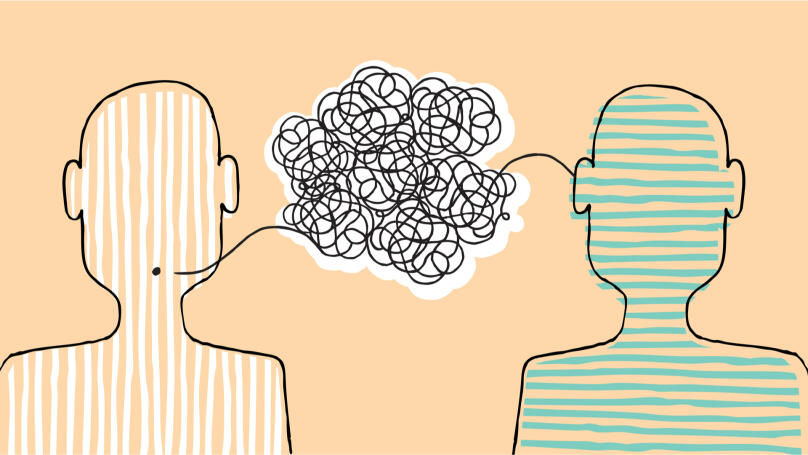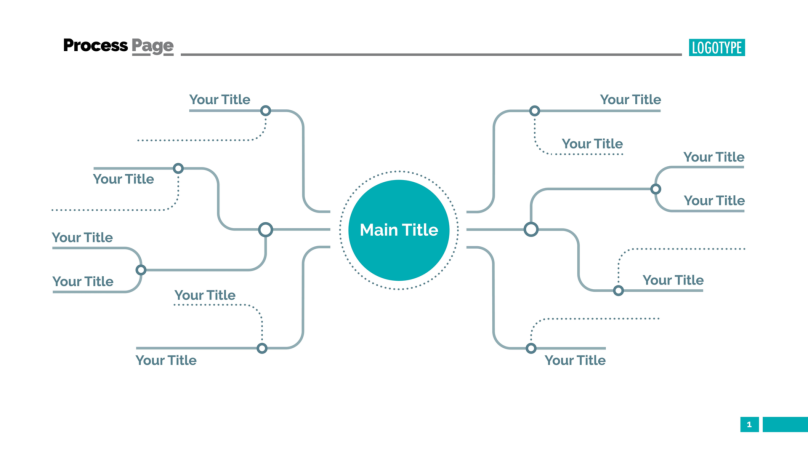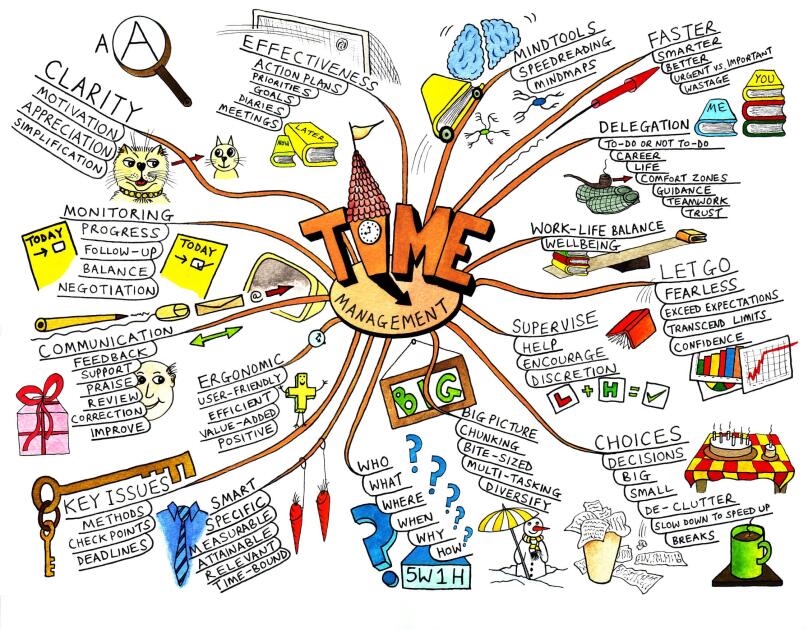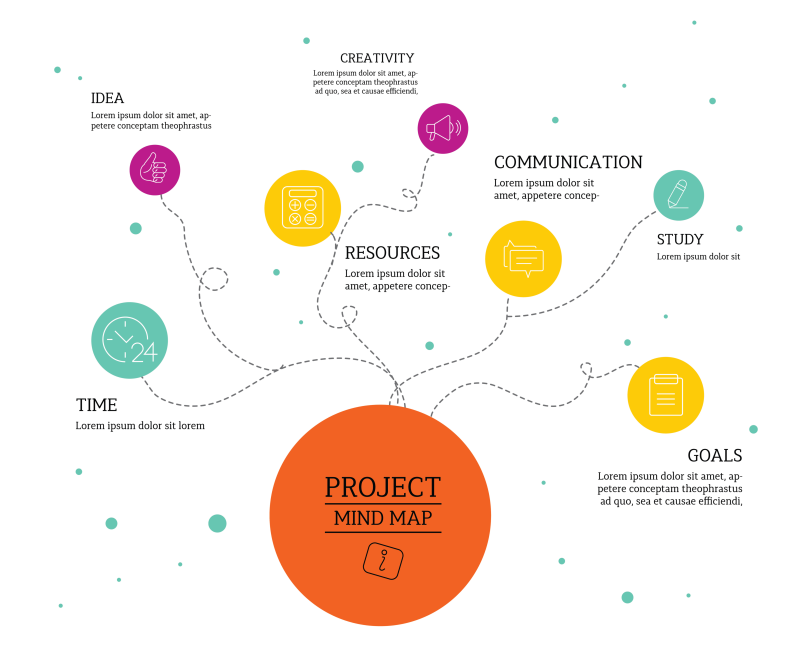Mind map
What is a mind map?

Mind mapping is a thinking visualization tool used to collect information, analyze it, remember it, and generate new ideas. This way of systematizing thoughts is actively used in business, creativity, and other areas of human life. Other names for mind mapping include a diagram of connections, brainstorming, an associative map, or an intellect map. Its main purpose is to record the course of thoughts in a form understandable to man for further use of these thoughts in life.
What a mind map looks like
In the classic mind map version, the main thought or idea is positioned and becomes the center of the mind map. All additional ideas are arranged around them and linked to the central idea by a common concept, subject, or logical sequence. In this way, the mind map is, in practice, a non-linear graphic layout with an intuitive structure that can be adapted and changed according to your vision. The mind map of the project can be structured in any way, from left to right or top to bottom - as long as it is clear and easy to understand.
The mind map method
In the late 1960s, Tony Buzan invented the process of mind mapping, defining it as a method of analyzing complex situations and solving problems. However, prototypes of mind maps have been around for a long time. You can find the concept in the works of ancient philosophers. For example, one of the earliest representations of complex information graphically belongs to the Phoenician philosopher Porphyry, who lived in the 3rd century AD. Utilizing the mind map process, he streamlined Aristotle's philosophy and categories. Furthermore, in the late 1950s, semantic networks, closely resembling modern mind maps, emerged to describe the learning process effectively. Thus, the mind map method has been used for centuries, being the most natural and convenient reflection of the course of human thought.
The main tasks of mind maps

Mental maps perform a variety of tasks. In layman's terms, they specifically allow you to:
- Find inspiration and generate new ideas;
- Structure information and analyze it efficiently with a minimum of time and internal resources;
- Better recall and assimilate information;
- Optimize management and analyze promotion strategies;
- Present ideas and thoughts to partners, teachers, teams, etc.
- Manage, delegate, and prioritize tasks;
- Detail a project and portray prototypes;
- Plan and define hobbies and interests (because you can also use mind maps in everyday life).
Types of mind maps

A mind map can have absolutely any structure and form, but their basic types are as follows:
- The scheme is a hierarchy. It is a classic mind map with the main idea (problem) in the sheet's center and a branching tree of secondary and tertiary issues. As a rule, the first level of problems or ideas descending from the main idea is its main directions and categories, and the subsequent ones are the prescribed tasks to achieve the goals. It is the most popular type of mind map for project work.
- Table. Drawing up a mental map is based on traditional tables. It is the easiest way to compare the advantages and disadvantages of ideas, projects, products, etc.
- Block structure. Use this to visualize many tasks, e.g., for a business plan. Firstly, fix the main idea or problem at the top of the sheet, and then important points with brief descriptions and sub-items are derived from it. That forms a kind of "ladder."
- "Fishbone." The most creative kind of map, which resembles a fish. Write the key idea on the left side (like a fish head), and the secondary data are diverged from it towards the tail by the level of importance or in chronological order.
- Timeline. Use a Timeline to track tasks and record the chronological sequence of events. A chart is the easiest way to work out possible courses of action and solutions based on the mapped situation.
- Network. The most popular type of mind map is a diagram of relationships. Elements are placed chaotically, without a clear structure, but reflect the connection with those or other factors (using arrows, colors, stickers, etc.). You put the key idea in the center.
Mental maps in education and pedagogy

Mental maps are an alternative to the usual line notes used in education. Because the purpose of mind maps is to visualize complex information and its complex relationships, they contribute to better memorization.
Specifically in schools, this approach is of particular importance. For example, mental maps of history allow you to record a certain historical event, placing the causes, consequences, main directions of development of actions and results around it, which is especially convenient for memorization. Likewise, mental maps in literature work similarly - you can use them to reflect information concerning the work's or the characters' images. Mental maps in mathematics also allow you to analyze the solutions to problems or examples in detail. A mental map of a city or country enables the study of the geography of an area. A mental map of a human can be used to study anatomy. Moreover, the rules for creating mental maps for all regions and lessons are the same, making this educational method effective and universal.
Also, with the help of mental maps in education and pedagogy, you can:
- Collect and systematize educational and useful information, which is especially important when preparing reports, thesis, and scientific papers. Such mental maps can even be used in work itself as an illustration to highlight important theories and notes.
- Quickly record and memorize lectures. You can compose intelligence cards right during classes since you can write such cards even more efficiently and quicker than regular texts. In addition, intelligence cards will help you calculate study hours and create a productive curriculum. You can also use them to structure educational goals and topics to be learned or mastered.
- Mental maps are actively used in learning a foreign language, namely to expand vocabulary. The theme is placed in the center. For example: "clothes" and words related to it are lined up around on the branches - "dress," "shoes," "shirt," etc.
- When working as a team, for example, during a training or brainstorming session, a mind map makes it easier to outline the ideas and thoughts of participants around a specific problem. You can also use it to display the roles of these participants, deadlines for completing tasks, etc.
How to make a mind map
You can make a mental map according to the classical model in just a few steps:
- Depending on the map's purpose, you conduct a brainstorming session on a fundamental topic. Firstly, please write down the issue in the center of the map and highlight it. The topic can be a thought, an idea, a name, or a problem you need to solve. For instance, circle it.
- Then it is necessary to highlight the keywords of the first level - important categories or chapters that directly relate to the central idea. They are depicted around it and highlighted in a different color. It is best to use keys consisting of one to two words - the shorter the description of the ideas, the easier it is to perceive them. You can also add images to categories to invoke associations at this stage.
- Next, the keywords of the second level, third, and so on are written according to gradation. You can base the gradation on the degree of importance or general characteristics - start from your perception and convenience.
Ideas for a mind map

You can diversify your mind map and make it easier to understand with the following ideas:
- Bright colors. According to human psychology, we perceive information more easily when separated by lines, graphs, and colors. You can also use different fonts, markers, pencils, and symbols to put accents on the mind map. The brightest colors and brightest (large) symbols should be used in the most important ideas and thoughts, as they are the ones that your attention will fall on first when viewing the map.
- Your own naming system. It's worth developing it before you even begin creating your mind maps. Most importantly, don't forget what each symbol means! Your system of symbols allows you to fill in the map as much as possible and not leave gaps that might confuse you after a while.
- A few central concepts. You can use a different mind map for each idea or combine them by drawing several cards in parallel in the same space. Write two to three ideas in a row in the center of the sheet. Then, make a "tree" out of them. You may find that their branches echo each other, which will generate new ideas.
- Additional notes. When making a mind map, you can use additional text and leave comments on each subtopic if it needs to be deciphered or explained. The main thing is not to overdo it: a mind map is a visual tool, so there should be a minimum of text.
- Toy with the design. You can put subtopics and ideas into different shapes, combine different types of mindmaps, or borrow the structure from other tools if you feel more comfortable.
Mind mapping software

You can make a mind map by hand, using a large sheet of paper (preferably a canvas) and colored pens or pencils. However, it is much easier and more convenient to utilize online services, especially since some are designed specifically for working with mind maps. Some applications for creating mind maps are:
- XMind. One of the most popular mind mapping software, which works on almost all operating systems. The desktop version is available for free. For other devices, there are different rates from $79 to $99.
- MindMeister. This free software program has cloud technology built-in, so you can work with MindMeister as a whole team and at any distance. You can also export mind maps to other devices as slide presentations.
- iMindMap. A program developed by Tony Buzan himself, the founder of the modern mind map concept. This service offers all the necessary tools for creating your map and video lessons for learning.
- MindManager. The service offers many templates to create your mind map, from minimalistic to informal and creative looks. It is also possible to link several maps using links, thus building interconnections between projects.
- Coggle. Another service for collaborative work on a mind map has a function for commenting on topics and notification of changes to the map by mail. The service is free but has an extended version for $5. Best suited for beginners who don't know how to make a mental map in practice.
Examples of mind maps
Mental maps are most often the result of creativity, creative ideas, and personal convenience. Therefore, mind maps come in various structures, shapes, and notations, easily being searched on a Google search. You can also take the following examples of mind maps as a template or sample:


























